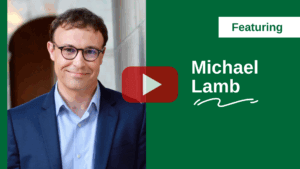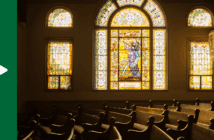
In this episode, Michael Lamb introduces The Arts of Leading, a book exploring how the humanities offer essential insights into leadership. He argues that leadership is a liberal art, and he highlights lessons from unsung leaders, the performing arts, and biblical figures like Moses.
Listen on Apple Podcasts | YouTube Music | Spotify
Watch on YouTube

- Transcript — Click or Tap to Read
-
Announcer: Leading Ideas Talks is brought to you by the Lewis Center for Leadership of Wesley Theological Seminary in Washington, DC. Subscribe free to our weekly e-newsletter, Leading Ideas, at churchleadership.com/leadingideas.
Leading Ideas Talks is also brought to you by More Church Leaders | Stronger Church Leaders. Learn strategies to identify and support new leaders and build and maintain effective ministry teams. The More Church Leaders | Stronger Church Leaders Video Tool Kit resource helps clergy and lay leaders discover a more fruitful way of being in ministry together, Learn more and watch video previews at churchleadership.com/shop.
In this episode, Michael Lamb introduces The Arts of Leading, a book exploring how the humanities offer essential insights into leadership. He argues that leadership is a liberal art, and he highlights lessons from unsung leaders, the performing arts, and biblical figures like Moses.
Jessica Anschutz: Welcome to Leading Ideas Talks, a podcast featuring thought leaders and innovative practitioners. I’m Jessica Anschutz, the Interim Director of the Lewis Center for Church Leadership, and I’m your host for this Leading Ideas talk. Joining me is my friend, Michael Lamb, the FM Kirby Foundation Chair of Leadership and Character, and Executive Director of the Program for Leadership and Character, and the Associate Professor of Interdisciplinary Humanities at Wake Forest University. He is also the co-editor of The Arts of Leading: Perspectives from the Humanities and Liberal Arts. Thank you, Michael, for taking time with me today to talk about leadership.
Michael Lamb: Thank you, Jessica. I’m very grateful to be here.
Jessica Anschutz: Michael, as we start off our conversation, I want to invite you to introduce your book, The Arts of Leading: Perspectives from the Humanities and Liberal Arts to our listeners.
Michael Lamb: Great. Great. Well, thanks Jessica. This is really a book that tries to explore what we can learn about leadership from the arts and humanities. So, if you go to a bookstore and look at the shelf for leadership, you’ll often see books from business or from social science but not books from literature or history or religion. And so, what we argue in this book, is that those disciplines are really important for understanding leadership as a human phenomenon, not just as a management practice. And so, our real aim is to help readers and others think about leadership in its full complexity, which is often very relational and collaborative and quite complex. And to show the ways in which you know, history, philosophy, religion, classics, music, theater, might uncover new ways of approaching leadership in ways that really help us expand our imaginations and, therefore, be more attuned to the ways in which leaders enact their own practices in the world in meaningful and effective ways.
Jessica Anschutz: Thank you, Michael. I really appreciate the central claim of your book that leadership is a liberal art. What do you mean by this?
Michael Lamb: Jessica, we went to liberal arts colleges and when we hear about liberal arts, we often think about the ways in which a university might teach certain disciplines. But the actual root of the word “liberal art” comes from Latin. It means the arts that help make us free from “liber,” meaning, meaning free. And so, “liberal arts”—those disciplines are arts in ancient Greece and Rome that help their practitioners become free thinkers, to be virtuous citizens and good friends.
And so, we think that liberal arts is important context for leadership, and that leadership itself, when understood properly, is a liberal art. It’s the art that helped us become free, both individually, but also as a community. And so, how do we think about leadership in that context is really the aim of the book. It is to really to see leadership as a set of arts that can help us enact and pursue freedom, but also requires that liberal arts, those disciplines that help make us free, to do that in ways that are humane and virtuous. And so, we think that reclaiming that view is very important, in part because so much of the work on leadership is done in a business or management context. It’s nothing about the kind of complex lessons of history or philosophy or religion that are so crucial to how we think about what human beings are and how human beings work together to achieve common goods.
And so, we think that those liberal arts are crucial to making sure we produce leaders who do care about freedom, and about virtue, and can resist tyranny and domination that might actually exclude freedom or prevent others from actually working toward the common good.
Jessica Anschutz: One of the things I also really appreciated about the book is that you have chapters from a wide variety of leaders in different fields that have so many different leadership lessons that we can draw on from the liberal arts, and I’m wondering if there may be one of those lessons that most surprised you, and if so, what is it and why?
Michael Lamb: Yeah, there’s so many surprises in this book for me. When I first began, this book began as a conference we held at Wake Forest with the Oxford Character Project back in 2019. And we had the idea for the book, and we were just really encouraged by how many people came to the conference, but also how many new insights emerged over the course of that weekend. And so, I’ve been really surprised by the ways in which the visual and performing arts, especially, can really unlock new insights on leadership. We often think about leadership as this kind of set of practices, but don’t think about the ways in which acting might help us think about how we show up and perform certain roles in the world. And there’s a great chapter by Melissa Jones Briggs, who teaches at Stanford’s Business School, on how she uses acting techniques to help train future leaders to think about how they’re showing up and revealing their identity, or perhaps covering their identity, in ways that might make them safe for a certain kind of role. So, thinking about acting as a kind of technique was really surprising for me.
Likewise, with a great chapter by Pegram Harrison, who teaches at Oxford’s Business School, about his own experience teaching leadership through conducting. He himself is a trained musician, but also a scholar of literature and humanities. And he has this great workshop, where he actually trains leaders by actually giving them a chance to lead a choir, probably a pretty common experience for many church leaders who listen to this podcast. And what he shows is that, if you ask someone who doesn’t know music to go conduct a choir, they’ll often start by raising their hands and trying to figure out what they’re doing. It creates chaos, right? And so, he says, often the first thing leaders should do is ask what their choir needs, right? They never, actually never think to ask what they need; they just kind of assume they should start waving their hands and directing in some way. And so, it shows the ways in which a common practice like conducting in the arts might help us sort of center, not the leader but those who are being led in ways that makes their voices important to the process of achieving a common good. And so, those kind of insights about what we can learn when we sort of shift our perspective on leadership was really exciting for me and really opened my own views about how other forms of art, from poetry to painting and portraiture, might illuminate different aspects of leadership.
Jessica Anschutz: I think you’re so right in that there are so many different lessons highlighted in the book, and I really, truly think there’s something for everyone in it. You’ve shared some about what has most surprised you. I’m curious now about what most challenged you.
Michael Lamb: There’s some really challenging chapters in this book, and I think what I really appreciated about them was the ways in which many chapters really elevate, sort of, unsung leaders or lesser-known leaders as being crucial to what leadership is. For example, there are a few chapters on the Civil War as a context for leadership, and we might think about the Civil War as being this case of political leaders like Lincoln, for example, or military generals like Grant, who are making a difference. But what Thavolia Glymph, for example, shows is that we also can’t ignore the role of enslaved people and refugees in the war. And she sort of does a really deep dive into how these leaders, not often told as part of the history, were making real change in resisting sort of injustice and helping to promote freedom.
And so, by lifting up these unsung heroes, she shows how we should think about leadership in a much more expansive way; and also, how we think about learning from history. Often now, many people will do “staff rides,” as they’re called, of various battlefields. Glymph suggests we actually do staff rides of different plantations to understand the ways in which people on those plantations were enacting resistance and helping sort of to produce conditions for their own freedom.
And so, I think it helps us think about ways in which we both understand what leadership is; but also, how we look to history, and which history looked to, to understand our own roles as leaders, and how we then use that history to expand our leadership in productive and really imaginative ways.
Jessica Anschutz: Thank you so much for highlighting the unsung leaders aspect of the book. In chapter six, Marla Frederick writes about “women’s work” and the question of leadership, and she says, “One cannot look for leadership only in the polished photos adoring the halls of our institutions. Leadership is about who gets the work done, advances the cause of the institution, and creates a vision for future generations.” How does her chapter and her work help us think about the unsung leaders?
Michael Lamb: This is my favorite chapters in the book. Marla is the Dean of Harvard Divinity School, and she’s a great scholar of various traditions in the black church, and she’s done a lot of work on ethnographies of various churches and communities there. And she has a beautiful chapter about her own home church in Sumpter, South Carolina, First Baptist Missionary Church, which was founded in 1868—three years after the Civil War ended—by those who were formerly enslaved. And the record historically has been that it’s these celebrated men who are the founders of this church. But when she dug into the archives at her home church to celebrate its anniversary, she found a different story there. It was actually three women: Tilda Bush, Minnie Blair, and Mary Mitchell, who “organized the church” according to the archives. And so, she really was surprised by this lesson, how sort of history often erases those who actually did the work of leadership.
And so, her real goal in this chapter, both to her history of this church but also her work in North Carolina to discover women leaders in the black church, is to show the ways in which it’s those people doing work between Sundays—not just on Sunday morning—who are often the leaders of these communities. Those who really see leadership, not as an individual matter of charisma or of a power or office, but who see it as those who try to advance the common good and do the work not just in a public way, but often in very invisible ways to serve other members of the church, to help their communities to deliver meals, or take people to the doctor, in ways that often aren’t seen but really make the difference at bringing the community together. And I think her chapter really gives us a sense of what it means to actually be a leader in ways that might not be as public but can be equally or even more powerful.
 More Church Leaders | Stronger Church Leaders helps clergy and lay leaders discover a more fruitful way of being in ministry together. This video tool kit provides practical strategies to identify and support new leaders and build and maintain effective ministry teams. Learn more and watch video previews.
More Church Leaders | Stronger Church Leaders helps clergy and lay leaders discover a more fruitful way of being in ministry together. This video tool kit provides practical strategies to identify and support new leaders and build and maintain effective ministry teams. Learn more and watch video previews.Discover more video tool kits plus adult Christian studies at our online store.
Jessica Anschutz: How might churches think about celebrating these unsung leaders?
Michael Lamb: Oh, that’s a great question. I think what Marla does in this chapter is really tell their story. And I think there are more occasions for us in our churches and communities to think about how we tell the story of these leaders by perhaps giving them accounts to honor their work in sermons that we preach or in awards that we might give for those in the church who might be the critical leaders that often aren’t celebrated by holding an office, or by actually inviting people in the church to tell stories. One thing that we do in our own team at Wake Forest is we have a section of our team meetings where we invite members of our team to shout out others on our team have done really good work that week or that month. I think giving occasions for us to publicly acknowledge this work and its real impact helps us all remember the value of it and also makes others feel seen in that moment. So, the more that we can do as communities—be it in a church or a university—to elevate those sort of invisible leaders, but also to acknowledge the work they do as not just valuable but essential to the actual operation of that community. And I think that’s what her chapter really does is show it’s not just an additive kind of addition to the community. Actually, it’s the core of this work. And I think the more we can recognize the core is not just one person, not one charismatic leader, but a whole community of people. That kind of interdependence can help us overcome the kind of individuality that often attaches to the idea of leadership.
Jessica Anschutz: Those themes of community and relationship really are pulled through the book. I want to change our direction a little bit and look at chapter four, which is about Mosaic leadership. What are some of the leadership lessons highlighted there?
Michael Lamb: This is a great chapter by Alan Middleman, who’s a scholar of Jewish thought and has really studied Moses’ leadership for a long time. What Middleman shows is that there are many different ways that Moses is portrayed in the history of interpretation. Some by Martin Buber, as this worldly failure who really did not actually achieve his goals of carrying his people into the promised land but was led by divine calling that kind of transcended this world. Whereas somebody like Machiavelli sees Moses as this armed prophet who’s using force to, to really lead a people in a different way, often with violence as one part of that.
He offers a much less known view, which is from the rabbis in the Midrash, where Moses is really portrayed as a much different kind of leader. One who cares about being effective, but not by exercising power in violent or vicious ways, but by really using persuasion, not coercion. So, he’s engaged in exchanging reasons with those in his community and building authority by actually building trust and that is really built through his character, and so his own approach to seeking the common good, not just his own interest. And so, it’s a much more expansive vision of leadership that really centers the importance of character and also really ensuring the leaders aims are geared toward the community, not just their own interest. And I think both Buber and Machiavelli missed that part of his leadership in how they portray him in these kinds of stark terms. And it’s a much more mundane vision of leadership, Middleman argues, but often one that’s actually more relevant to us. Because we’re not—in our world—going to be armed profits, we hope, or worldly failures. We want to be effective in what we do, but that often means that we do it in ways that is less dramatic, but often quite impactful.
Jessica Anschutz: Michael, I know a lot of your work centers on leadership and character, so I want to build on your answer in thinking about this and ask you: How might churches do a better job of thinking about leadership and character?
Michael Lamb: That’s a great question. I think there, there are a lot of things that I’ve learned in my own experience at a university that’s helped me think about leadership in a different way. I think one is just centering character. In a leadership position it’s often easy to center either policy or structure as being what leaders do. They either occupy an office that has a role and a hierarchy of organization, or they make policies that shape the larger community. Those are really important functions of leadership. But what those often do is really stress the institutional part of leadership, not the personal part and the human part, and I think leadership is fundamentally relational. Without people who might follow us, there can be no leaders. So, leaders are really someone who build relationships, and often we see that the most important relationships are those that are built on trust, and that trust really depends on character.
And so, it’s really centering these key virtues that are important for the church, like compassion, imagining someone who might be struggling, how you might show compassion to them. It is humility to recognize our own limits and the planks in our own eyes before we start criticizing others. Encouraged to be able to voice views and perspectives that often might challenge the status quo but then can invite people into a conversation that really helps to imagine a wider community. And so, I think thinking about those virtues are really important for us. Now, they’re part of the tradition of Christianity in a very central way, but often we see those as more content for a sermon than our own way of imagining our way of being in the world.
And so, the more we can embody those examples, and therefore be an exemplar for others in our community, while we also recognizing that we also are imperfect; that we’re not a fully formed person yet and that we’re on our own journey. I think that kind of humility invites them into a shared journey toward a common goal, not just as one person above them leading them in a certain direction. So, I think the more we can sort of think about character as part of leadership, the more we’ll be able to center those relationships that are crucial for building authority but also helping build trust.
Jessica Anschutz: Thank you so much, Michael, for emphasizing that it’s ongoing work for all of us and takes effort and intentionality as we strive to lead. I could probably spend the rest of the afternoon talking with you, but we do not want to keep our listeners forever. So, we’ll move toward the end of our conversation. I’ve got two more questions for you. What words of advice do you have for church leaders who are leading change?
Michael Lamb: Well, change is hard. And I think, you know, change can be very difficult for both the leaders but also for the congregations. And so, I think, again, I think the virtues are really important here. So, first, I think having a clear sense of purpose: Why are we changing? It’s change on its own is not enough. We need to know why we’re changing. Is it to create a more loving or just community? Is it to help to be more inclusive? Is it help? Is it to be more expansive in our vision? And so, being very clear about our purpose, our “why,” and making sure we articulate that in ways that people understand it is really important for us.
Second, having humility and recognizing that, as Pegram Harrison said, “It is not just a conductor who’s actually leading; actually, it’s the people in the choir too, who need to kind of give us their voices.” So, having humility to listen and to invite perspectives and input. Because the more that we actually are inviting people into the conversation and empowering them to lead with you, I think the more effective that it will actually be.
I think, third, having empathy for people who might have different perspectives on change, and finding ways to really help to understand their perspectives and make sure they feel seen, if not always agreed with—that’s going to be really important for maintaining unity in the midst of change.
And then courage, I think, is a crucial virtue. When anytime that change is happening, it takes a lot of courage. There’ll be obstacles to it. There’ll be people who challenge such change. So, knowing your “why,” knowing your purpose, can give you resilience and courage in the face of those challenges because you actually know you’re doing it for a good reason. If you begin to second guess yourself then that becomes really difficult. But, if you also lack humility to actually question your own views, then you might lead people in the wrong direction or perhaps leave people behind who might otherwise come with you. And so, I think, those key virtues are really invaluable for navigating change in our current moment.
Jessica Anschutz: Thank you so much, Michael. It’s been a joy to talk with you today. As we wrap up, I want to ask you, what is your hope for church leaders?
Michael Lamb: Well, thank you, Jessica. I think a lot about hope. I’ve written a whole book on Hope and the work of St. Augustine, and I think my hope is that church leaders really see themselves as people who not only profess a certain vocation or tradition, but also try to practice and live it. And I think the more that we can make sure that our professions—be that as teachers in the classroom or as preachers in the pulpit—embody our deepest values, and that we do that not just in superficial ways, but in real ways that are often unseen. And that we invite others in our lives to hold us accountable to that. You know, it’s my best friends who become great accountability partners for me and help me sort of recognize when I’m falling short of my aspirations but also help give me guidance and support when I need a boost. And so, I think finding those relationships among people, both within our churches, but also beyond our churches, can be invaluable for us as we really advance the change that the world needs.
Jessica Anschutz: Great. Thank you so much, Michael.
Michael Lamb: Thank you, Jessica. It’s been a delight to talk today.
Announcer: Thank you for joining us for Leading Ideas Talks.
Don’t forget to subscribe to our free weekly e-newsletter, Leading Ideas, to be notified when new episodes are published. Visit churchleadership.com/leadingideas.
 The Arts of Leading: Perspectives from the Humanities and Liberal Arts (Georgetown University Press, 2024), edited by Edward Brooks and Michael Lamb, is available from the publisher and Amazon.
The Arts of Leading: Perspectives from the Humanities and Liberal Arts (Georgetown University Press, 2024), edited by Edward Brooks and Michael Lamb, is available from the publisher and Amazon.
Related Resources
- Change Leaders Persevere by Ken Owens
- 7 Characteristics of Humble, Confident Leaders by Kay Kotan and Phil Schroeder
-
Moses, Pyramids and Leadership After Empire featuring Kathleen McShane and Elan Babchuck — Watch the Leading Ideas Talks podcast video | Listen to the podcast audio version | Read the in-depth interview
If you would like to share this article in your newsletter or other publication, please review our reprint guidelines.




